
A cocktail shaker is an indispensable bar tool and they’re not all the same. Drinks that include juices, syrup, egg and dairy products must be shaken to properly incorporate the ingredients. Choosing the right one for your needs will up your bartending game, making it easier and taste better. There are shakers and there are shakers. They come in hundreds of shapes and styles, but only four specific types, each with benefits and drawbacks.
Cobblers
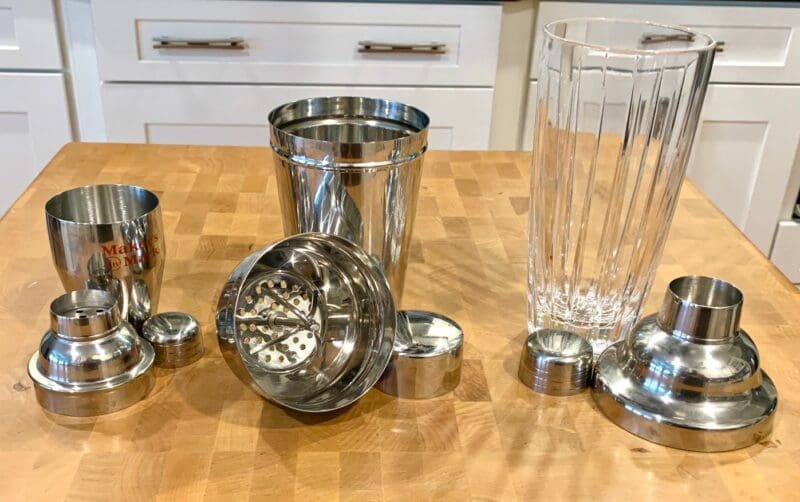
Lets start here, like most home enthusiasts. They’re easily the most popular and available in every shape and size imaginable. Most are plain and simple, but some are elaborate artworks made of exotic metals and alloys. You can find them everywhere from neighborhood groceries to jewelry stores. The small single serving cobbler on the left is a free sample furnished by Maker’s Mark. The expensive cut crystal shaker on the right makes a great paperweight, but is useless for shaking cocktails!
Their appeal is availability and three piece design. They have it all, a mixing tin, a built in strainer and a cap that doubles as a jigger that makes them easy to use.
That ease of use comes with some problems. Shaking creates a vacuum that can make it difficult to remove the cap or separate the tin and strainer. Usually the strainer holes are too large and allows chipped ice and fruit pulp through, muddying and diluting your drink. The biggest issue is leakage and the harder and longer you shake the more they leak. When using syrups or other sugary ingredients cobblers will become a sticky mess. If you use a cobbler, keep the bar towel handy.
Parisian
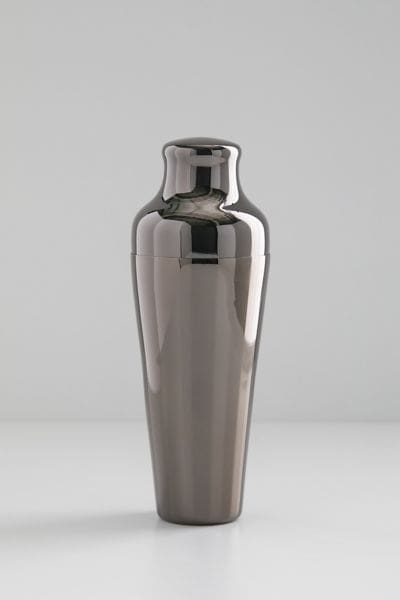
This style is sleek and sexy but costs more and still has the drawbacks of a cobbler. A tight sleeve fit avoids some ice chipping, but like the cobbler will get uncomfortable to hold for a long shake and you need a separate strainer. They also leak, but you can look good doing it!
Boston Shaker
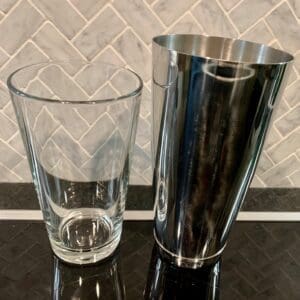
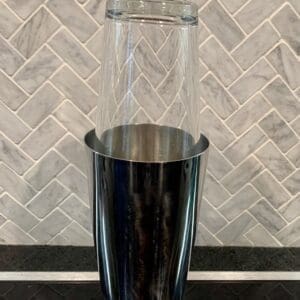
This is the gold standard revered by bartenders. It’s a two part shaker with a tin and a mixing glass. It isn’t perfect, but when used properly it is leak free. Let me repeat that, it’s leak free! The glass component is another plus, because it doubles as a mixing glass to stir cocktails.
The Boston shaker requires a short learning curve to master combining and separating the two halves. It takes two or three tries to get it down pat and the result is leak free performance. From that point forward you can shake cocktails like a pro and remain dry while doing so.
Tin On Tin
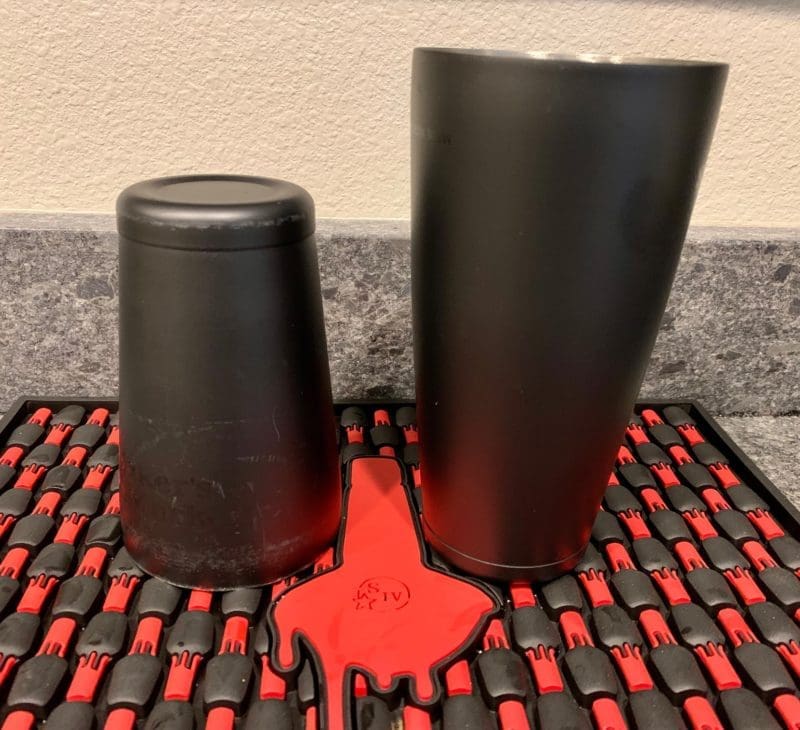
These are like Boston shakers but with two weighted tin halves. It also requires a short learning curve, but it’s virtually indestructible without any glass parts. It is also uncomfortable for a long shake and you can’t see the ingredients in the mixing tin.
Summary
Which is the right shaker for you? The answer lies in how often, how many and how complex your cocktails will be. A cobbler is fine for occasional use, but if your seriously into the cocktail culture get a Boston shaker. You’ll be glad you did.
Postscript
One thing you will not need a shaker for is a Classic Martini, but that is a whole ‘nother story you can read about Here.
